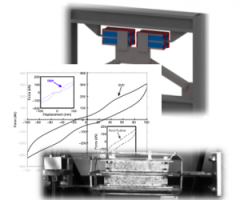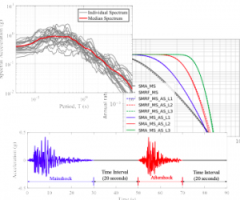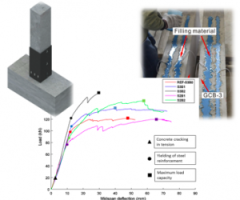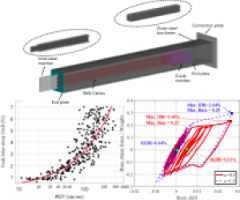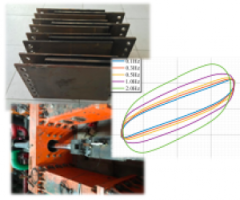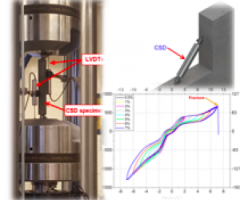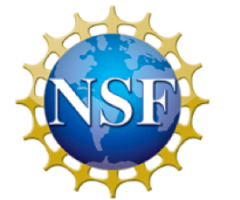Resilient Structural Systems
Resilient Design of Civil Infrastructure
This research aims to develop new devices and systems that can be implemented into large-scale civil infrastructures such as bridges and buildings to guarantee their integrity and safety against multi-hazard threats. Emphasis is placed on the use of smart materials in the design of control devices.
Superelastic Viscous Dampers
This research explores the development of a hybrid passive control device and investigates its performance in improving response of steel frame structures subjected to multi-level seismic hazards. The proposed device, named as superelastic viscous damper (SVD), relies on SMA cables for re-centering capability and employs a high damped blended butyl elastomer compound to augment its energy dissipation capacity.
Aftershock Performance Assessment
Structures that are exposed to the combined effect of a mainshock and a series of aftershocks in a short duration of time have increased vulnerability to structural damage. This research explores the performance of buildings under mainshock-aftershock ground motion sequences in a probabilistic framework using the seismic fragility and seismic demand hazard curve methods.
Near Surface Mounted (NSM) Strengthening
A considerable portion of existing reinforced concrete (RC) buildings was designed according to older design codes and are vulnerable to extreme events such as earthquakes. Also, RC structures around the world requires strengthening or replacement due to various reasons. The near-surface mounted (NSM) method is a relatively new technology and becoming an attractive strengthening method. This research investigates strengthening RC beam and columns using NSM technique.
Self-centering Bracing Systems
To improve seismic resilience of buildings, self-centering structural systems that can eliminate or minimize residual drifts after seismic events have gained increasing attention over the past decade. This research explores the development of SMA-based self-centering bracing systems and their seismic performance using a probabilistic approach.
High-damping Rubber Damper
A large number of studies have been conducted characterize mechanical response of viscoelastic dampers. However, most of these studies have been on small capacity dampers. Larger capacity dampers are needed to control seismic response of buildings. This research explores the use of a high-damping rubber material to develop a large capacity viscoelastic damper.
Confined Superelastic Damper
This research aims at the development and characterization of a Confined Superelastic Damper (CSD) that dissipates seismic energy while providing a self-centering capability to minimize damage to structural elements. The CSD is made up of a superelastic Nickel-Titanium shape memory alloy bar restrained by a steel tube filled with mortar composite
Related Publications
- Asfaw, A., and Ozbulut, O. E. (2021). “Characterization of shape memory alloy energy dissipaters for earthquake-resilient structures.” Structural Control & Health Monitoring, 28(4), e2697, 1-19, HTTPS://DOI.ORG/10.1002/STC.2697, April 2021.
- Xing, G., Ozbulut, O. E., Al-Dhabyani, M.A., Chang, Z., and Daghash, S. (2020). “Enhancing flexural capacity of RC columns through near surface mounted SMA and CFRP bars.” Journal of Composite Materials, 54, 29, 4661-4676, HTTPS://DOI.ORG/10.1177/0021998320937054, December 2020.
- Cao, S., and Ozbulut, O.E. (2020). “Long stroke shape memory alloy restrainers for seismic protection of bridges.” Smart Materials and Structures, 21, 115005, HTTPS://DOI.ORG/10.1088/1361-665X/ABA53A, November 2020.
- Shi, F., Saygili, F., Ozbulut, O. E., and Zhou, Y. (2020). “Risk-based mainshock-aftershock performance assessment of SMA braced steel frames”, Engineering Structures, 212, 11056, 1-14, HTTPS://DOI.ORG/10.1016/J.ENGSTRUCT.2020.110506, June 2020.
- Asfaw, A., Sherif, M., Xing, G., and Ozbulut, O. E. (2020). “Experimental investigation on buckling and post-buckling behavior of superelastic shape memory alloy bars.” Journal of Materials Engineering and Performance, 29(5), 3127-3140, HTTPS://DOI.ORG/10.1007/S11665-020-04815-9, May 2020.
- Cao, S., Ozbulut, O.E., Wu, S., Sun, Z. and Deng, J. (2020). “Multi-level SMA/lead rubber bearing isolation system for seismic protection of bridge.” Smart Materials and Structures, 29(5), 055045, HTTPS://DOI.ORG/10.1088/1361-665X/AB802B, May 2020.
- Xing, G., Wang, Z., Ozbulut, O. E., and Chang, Z. (2020). “Feasibility of using aluminum alloy bars as near-surface mounted reinforcement for flexural strengthening of RC beams.” Structural Concrete, 1-20, HTTPS://DOI.ORG/10.1002/SUCO.201900361, March 2020.
- Shi, F., Ozbulut, O. E., and Zhou, Y. (2020). “Influence of shape memory alloy brace design parameters on seismic and collapse performance of self-centering steel frame buildings.” Structural Control & Health Monitoring, 27(1), e2462, 1-18, HTTPS://DOI.ORG/10.1002/STC.2462, January 2020.
- Shi, F., Saygili, G. and Ozbulut, O. E. (2018). “Probabilistic collapse performance evaluation of SMA-braced steel frames considering SMA brace failure.” Bulletin of Earthquake Engineering, 16(12), 5937-5962, HTTPS://DOI.ORG/10.1007/S10518-018-0415-8, December 2018.
- Silwal, B., Huang, Q., Ozbulut, O. E., and Dyanati, M. (2018). “Comparative seismic fragility estimates of steel moment frame buildings with or without superelastic viscous dampers.” Journal of Intelligent Material Systems and Structures, 29(18), 3598-3613, HTTPS://DOI.ORG/10.1177/1045389X18798936, November 2018.
- Xing, G., Chang, Z., Ozbulut, O. E., Wu, T. (2018). “Behavior and failure modes of RC beams strengthened with near surface mounted GFRP or aluminum alloy bars.” Structural Concrete,19(4), 1023-1035, HTTPS://DOI.ORG.10.1002/SUCO.201700099, August 2018.
- Silwal, B., and Ozbulut, O. E. (2018). “Aftershock fragility assessment of steel frames with self-centering dampers.” Engineering Structures, 168, 12-22, HTTPS://DOI.ORG/10.1016/J.ENGSTRUCT.2018.04.071, August 2018.
- Zhou, Y., Shi, F., Ozbulut, O. E., Xu, H., and Zi, D. (2018). “Experimental characterization and analytical modeling of a large-capacity high-damping rubber damper.” Structural Control & Health Monitoring, 25(6), e2183, 17 pages, HTTPS://DOI.ORG/10.1002/STC.2183, June 2018.
- Daghash, S., and Ozbulut, O. E. (2017). “Flexural performance evaluation of NSM basalt FRP strengthened concrete beams using Digital Image Correlation.” Composite Structures, 176, 748-756, HTTPS://DOI.ORG/10.1016/J.COMPSTRUCT.2017.06.021, September 2017.
Find more HERE.
Related Projects
Multi-hazard resilient design of buildings
Project Title: Multi-hazard resilient design of buildings with high strength and damping capacity shape memory alloy
Project Duration: 10/01/2015 – 09/30/2018
Sponsor: National Science Foundation (NSF)
